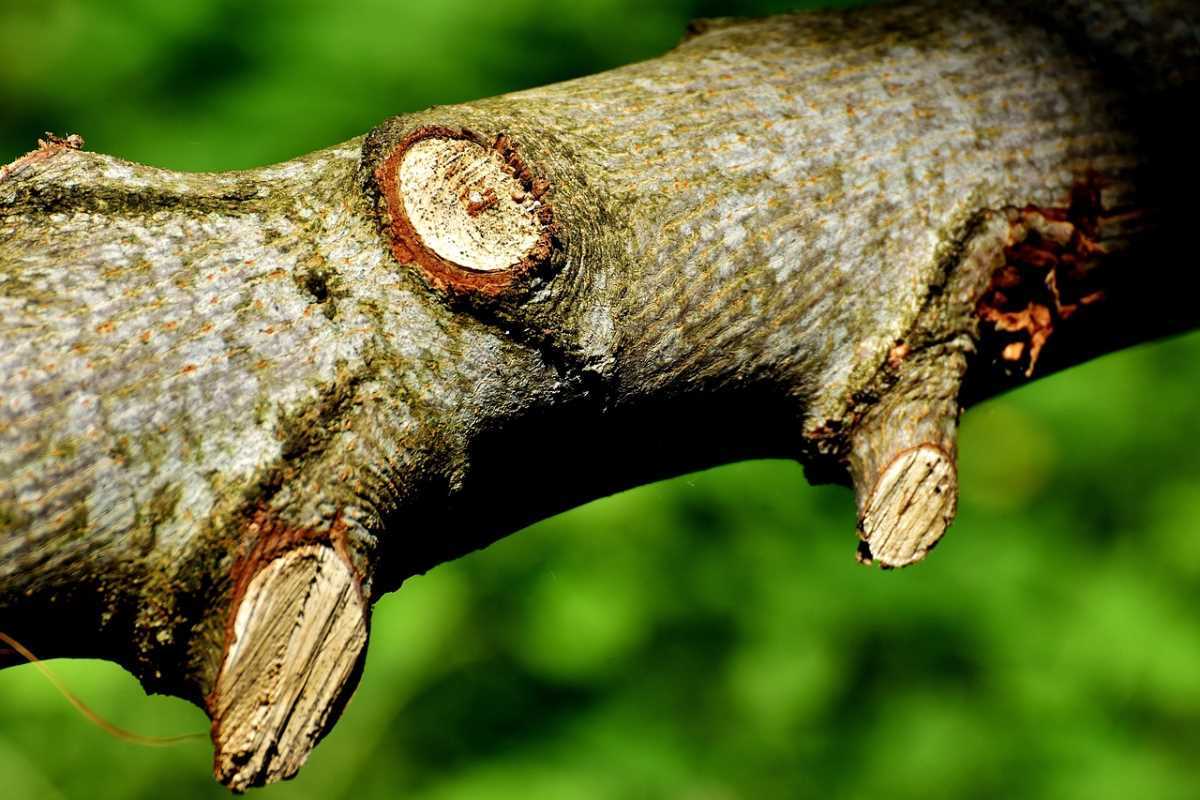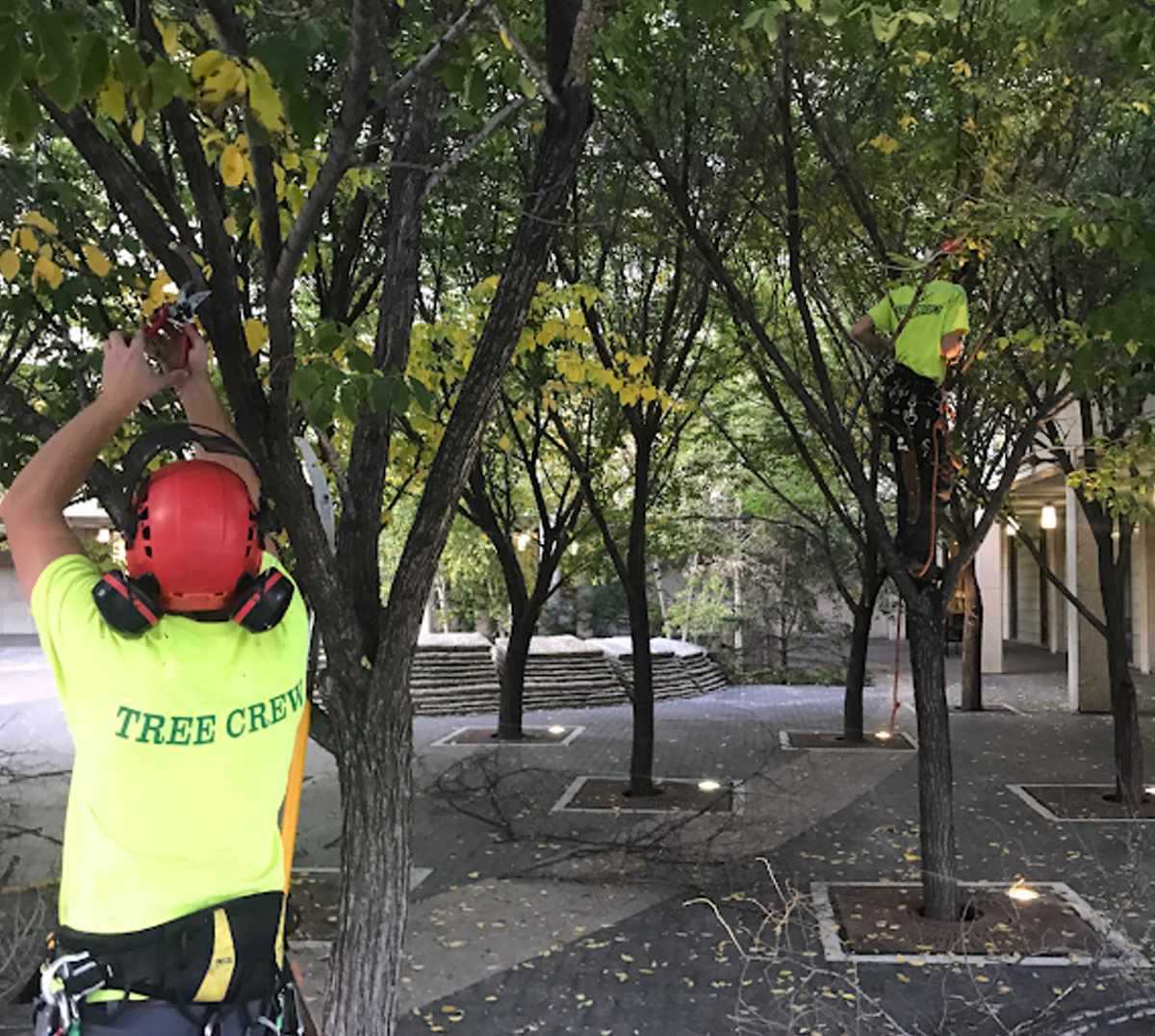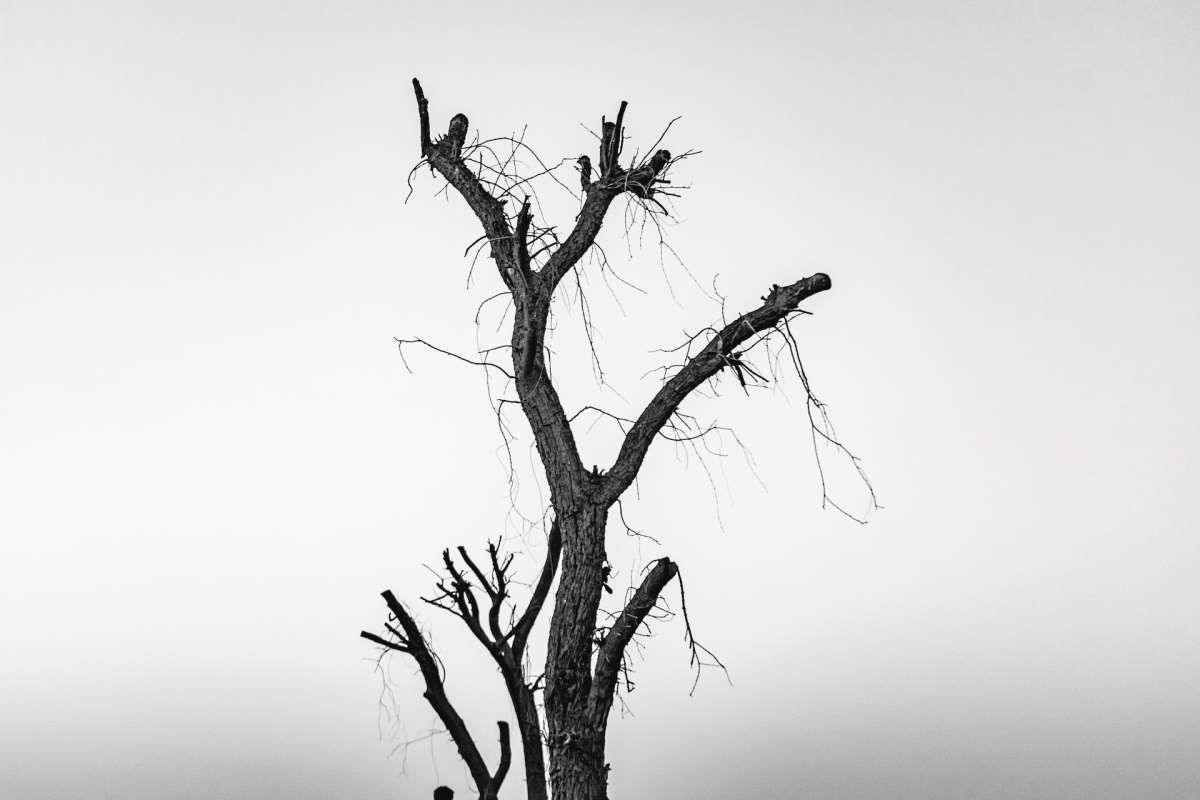The Effects of Improper Cutting on Tree Health
Reading time: 8 minutesPruning and cutting your trees can have a lot of benefits, like helping to increase the production of fruit and flowers and encouraging growth. That’s why experts encourage you to keep up with regular maintenance and trim or prune trees on a schedule.
Because there are so many methods or ideologies for trimming your trees, it’s easy to lose track of what’s good for them. But it does matter how you cut or prune your trees. Improper cutting can negatively impact your trees’ overall health.
That’s why it’s essential to understand what to avoid if you’re thinking about doing this on your own and how professional arborists can keep your trees healthy and strong if you don’t have the tools to tackle pruning alone.
Types of Tree Cutting
First, get to know the most common types of tree cutting and why they’re done:
- Dead pruning – This practice involves cutting off only a tree's dead or dying branches and leaving all the healthy branches intact.
- Crown reduction – A practice that shortens branches evenly from the top down throughout the crown while removing anything dead or decaying.
- Crown thinning occurs when an arborist strategically removes inner branches to reduce heavy foliage that may be preventing air circulation or light from passing through the tree’s upper canopy.
- Crown lifting – Involves removing branches at the base of the crown to increase the amount of space between the tree trunk and where the canopy begins.
- Shaping involves cutting smaller branches outside the tree to give the foliage a uniform look.
- Topping – The entire top of the tree is cut off, usually for trees that are too big and encroaching on rooftops and powerlines.
- Removal – This is when the tree is cut down at the base of the trunk and is completely removed except for its root system.
When done correctly, these tree cutting techniques can help you keep your trees in excellent condition and improve their aesthetic appearance. However, if any of these activities are done without the right tools, at the wrong time, or on the incorrect part of the tree, it can cause more problems than it solves.

Why Tree Cutting Is Important
Cutting your trees properly is essential to their health and longevity. Regular trimming with the proper techniques removes dead and diseased branches, allows more sunlight and air to get through the foliage, and reduces the risk of pests and fungal infections.
Plus, pruning keeps your trees looking great and supports the surrounding ecosystem. Healthier branches mean your tree will likely experience healthier growth and more of it once the growing season kicks off. It also creates a healthier animal habitat while shaping the trees around your home and urban forest for the future.
The Proper Way to Cut Trees
Knowing the proper tree cutting techniques is worthwhile as a home (or tree) owner. When you know these methods, you can ensure that any professionals you bring in are doing their job correctly, and you’ll have more success if you ever need to make pruning or trimming decisions on your own.
Best practices note that you should cut just outside of the branch collar. The collar is a slightly raised area where the branch attaches to a larger branch or the tree trunk. Cutting here minimizes stress and activates specialized cells in the collar that help heal the cut quickly before bacteria and fungal infections can begin.
Techniques to Keep Trees Healthy
According to the University of Alberta, you should avoid cutting or trimming live tree branches in the spring or summer for any reason. This is because it causes high stress and reduces the tree's resources for critical metabolic processes during the growing season. It can also attract unwanted pests, like bark beetles that carry Dutch Elm disease.
At Green Drop, we do most of our pruning and trimming in the fall to allow trees to continue absorbing nutrients and moisture before any winter frost can set in.
You should also take into account the type of tree you’re trimming. Proper pruning and cutting techniques can vary depending on the tree species, age, and specific goals. When in doubt or dealing with larger trees, it's essential to check with a certified arborist to ensure you're following best practices.

The Role of Tools and Equipment in Proper Cutting
Using the right tools and equipment when cutting a tree branch is critical not only for preserving the health of the tree but also for following proper safety standards. Tools specifically designed for cutting tree bark, like loppers or chainsaws, are designed to make clean, precise cuts that reduce the risk of tearing or damaging the tree branch.
Poor-quality tools can cause jagged cuts that take longer to heal, creating entry points for diseases and pests. Using the most appropriate tools for the job also makes the cutting process less physically demanding and more efficient, which reduces the risk of accident or injury.
Improper Tree Cutting Techniques to Avoid & Why
Unfortunately, trimming or cutting your trees isn’t as easy as picking up a pair of loppers and getting to work. How and when you prune makes a significant difference in the outcome, and any mistakes you make could be costly. Be sure to avoid these common but harmful tree cutting techniques:
- Cutting back too much during the growing season – If you’re pruning back leaves too heavily during the growing season, you may rob your trees of what they need to make nutrients. It also removes the tree’s protection from the harsh sun, potentially causing the bark to become sunscalded.
- Topping your trees – Tree topping is the practice of cutting off the entire top of a tree, which often occurs when a large tree has outgrown the space it was originally planted in. Not only is it incredibly harmful to the tree, but it’s also unattractive and takes an extremely long time to grow enough leaves back to cover the stumps at the top if they ever do.
- Making the wrong kind of pruning cuts – Cutting too close or too far away from a tree’s trunk can permanently damage it and cause it to begin decaying and eventually even die.
- Using blunt or dull tools – The tools you use to trim or cut branches should be clean and sharp so they don’t do excess damage to parts of the tree meant to remain intact. Clean tools also ensure bacteria or other microbes aren’t transferred to the tree during cutting. The Canadian Center for Occupational Health and Safety also warns against using blunt tools like hatchets or axes.
The Impact of Improper Cutting on Tree Health and Longevity
It's important to understand that improper cutting has many disadvantages and can be a severe risk to your trees. This includes things like:
Increased vulnerability to pests and diseases
Cutting a tree branch in the wrong place or during the wrong time of year can increase your trees' vulnerability by exposing them to harmful pests and diseases. For example, fire blight affects trees in warm, moist conditions. It is spread through bacteria that can be passed through infected pruning tools and impacts branches that have been pruned or trimmed.
Slower growth and development
Improper tree cutting makes it more difficult for trees to grow and develop appropriately. For example, cutting off branches during the growing season removes the tree's ability to make food and nutrients. This often causes trees to become stunted and unable to grow properly.
Structural weaknesses that can lead to breakage
Cutting trees incorrectly or in the wrong place can easily cause structural weaknesses, leading to healthy branches breaking off or becoming diseased.
Potential Tree Death
Worst case scenario, improper tree cutting results in the tree's death. This usually takes time to happen, though. Instead, the tree undergoes a slow and difficult death over months or even years.

Signs of Stress and Damage to Watch For
Trees display several signs of stress after cutting or pruning. There are many symptoms you can look out for, but some of the most common include:
- Wilting or drooping of leaves.
- Small, poorly formed leaves.
- Sap oozing at the pruning site.
- Cracking bark near the pruning site.
- Thinning crown or dieback at the top of the tree.
- Overflowering.
If you notice your tree exhibiting signs of stress after pruning, it's essential to contact a professional ISA-certified arborist to assess your tree. Having your trees trimmed or cut by a professional from the start can reduce their exposure to stress and ensure they recover as smoothly as possible.
The Importance of Proper Care After Cutting
Ensuring your trees are properly cared for after being cut or trimmed is also crucial. While cutting your tree is sometimes beneficial, it creates wounds that expose it to potential risks, like the above.
Your trees need good support after cutting, like treatments to the cut areas that reduce the likelihood of pests and diseases. You should also ensure the tree gets adequate nutrients afterwards through mulching, watering, and fertilizing. Careful aftercare helps your tree recover and promotes long-term structural integrity and aesthetic appeal.
How Green Drop Can Help
The effects of improper tree cutting can be significant and even ruin your trees. At Green Drop, we focus on using tree trimming and pruning techniques that have been proven beneficial for trees and work to keep them healthy and strong.
Contact us today to learn more about our tree trimming and tree cutting services or to schedule a time for one of our experienced professional arborists to visit your location to complete a comprehensive tree assessment.

